#comsol multiphysics
Explore tagged Tumblr posts
Text
What have I been up to? Well more or less more optics.
I started to learn about the Index Ellipsoid, and I am beginning to understand how we can quantify a materials allowed polarizations using the "indicatrix" (not going to lie this is a hard word to spell lol)
I now understand that there are two possible electric flux densities (basically the quadratic equations +/- gives two roots, so when you solve for two possible refractive indices, you also get two D solutions) and that these two fluxes are orthogonal.
The index Ellipsoid let's us characterize anisotropic crystals into biaxial (two defined optical axes) and uniaxial (two axes are equal)
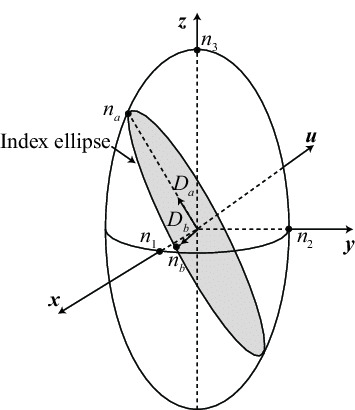
But honestly, I'm hitting a bit of a wall here. I just want to be familiar with the material before grad school starts. Since I'm self studying now, I decided to venture off into a related topic: Computational electromagnetics!!
I took numerical methods this winter so when I heard about Finite Difference Method I didn't look like a 🦌 staring at 🚗 lol (honestly I find Runge-Kutta methods scarier haha)
So I learned a bit about collocated grids, recalled Dirichlet boundary conditions, periodic boundary conditions as well as Neuman boundary conditions.
My plan is to use COMSOL multi physics to do a little simulation for my masters thesis, so I'm betting that having a grasp on the numerical side of emag is something I need to accomplish to bear fruitful results.
And of course I get hit with the realization exactly *why* plane waves are used to teach us optics: because they are simply a stepping stone towards us learning about Gaussian Beams!
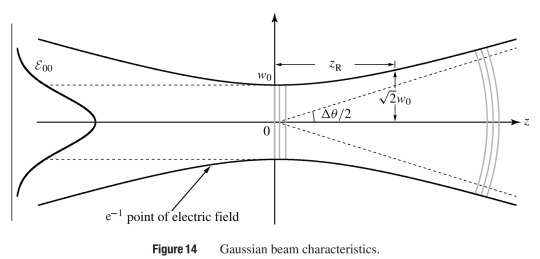
The 🐇 hole just keeps getting deeper and deeper... 🕳️
#anisotropy#optics#physics#math#electromagnetics#gaussian beam#boundary conditions#Neumann#Dirichlet#COMSOL multiphysics#numerical electromagnetics#Finite Difference Methods#SoundCloud
0 notes
Text
a week ago i (full of hubris) thought to myself. you know, this modeling (<- the multiphysics kind u_u) shit is not so bad. maybe i have gotten good at it. and now something fundamentally sinister is occurring with my fucking model and i'm going insane trying to troubleshoot. COMSOL i did not fucking miss you. bitch
9 notes
·
View notes
Text
Projeto de um Chip Híbrido Orgânico-Supercondutor com Memória Quântica em Polímero e Portas Lógicas Fotônicas
Resumo: Apresentamos uma proposta de arquitetura híbrida para um chip quântico que combina qubits de spin em polímeros dopados com elementos terras-raras (Eu³⁺) com circuitos supercondutores e dispositivos fotônicos integrados. O objetivo é explorar uma plataforma escalável que aproveite a flexibilidade dos materiais orgânicos e a robustez dos dispositivos supercondutores, incorporando correção de erros topológica e transdução qubit-fóton para leitura eficiente. Resultados simulados indicam tempos de coerência T2 superiores a 30 µs para Eu³⁺ em politiofeno, acoplamento dipolar de ~48 kHz a 15 nm e fidelidade de decodificação compatível com códigos de superfície.
1. Introdução A computação quântica avana rapidamente em direção a dispositivos escaláveis. No entanto, as tecnologias atuais enfrentam limitações quanto à integrabilidade, requisitos criogênicos e custos de fabricação. Neste artigo, propomos uma arquitetura híbrida que combina qubits orgânicos baseados em spins dopados com recursos supercondutores e fotônicos para otimizar desempenho, escalabilidade e integrabilidade.
2. Metodologia
2.1. Modelagem do Qubit de Spin em Polímero Utilizamos o íon Eu³⁺ incorporado em politiofeno dopado, com anisotropias de campo cristalino D=2,5 GHz e E=0,3GHz. O Hamiltoniano foi diagonalizado para obtenção do espectro ODMR. A taxa de decoerência foi estimada pelo modelo de Orbach: Γ=Γ0e−Δ/kBT com Δ=18 meV para Eu³⁺.
2.2. Código de Correção de Erros Topológico Simulamos um código de superfície 3×3 com acoplamento dipolar entre qubits separados por 15 nm. O termo de interação é dado por: Hdip=μ0μB24πr3(S⃗1⋅S⃗2−3(S⃗1⋅r^)(S⃗2⋅r^)) Obtivemos acoplamento de aproximadamente 48 kHz. Um circuito de codificação e decodificação foi implementado no Qiskit, com ruído de relaxação T1=35 µs e descoerência T2=34 µs.
2.3. Transdução Qubit-Fóton-Microondas A proposta inclui um anel ressonante de LiNbO₃ acoplado ao polímero e a guias de onda em 1,5 μm para conversão paramétrica descendente. A geometria do transdutor foi otimizada para casar impedâncias entre domínios óptico e de microondas com eficiência η>80%.
3. Resultados
Espectro ODMR para Eu³⁺: quatro níveis resolvidos, transições em torno de 2–6 GHz.
Coerência estimada: T2≈34 μs (32× maior que Gd³⁺ a 20 K).
Acoplamento dipolar: −48,3 kHz, viável para correlação em códigos de erro.
Simulação Qiskit: fidelidade de decodificação acima de 98% com 10000 disparos.
Transdutor: perda estimada < 2 dB, largura de banda < 10 MHz.
4. Discussão A arquitetura híbrida proposta permite o armazenamento quântico em qubits de spin e processamento rápido em circuitos supercondutores, com leitura fotônica eficiente. A correção de erros topológica mitiga limitações de fidelidade dos materiais orgânicos, enquanto a transdução permite interface com redes quânticas.
5. Análise Crítica [...]
6. Contribuição Avançada: Problema de Engenharia Integrada
Objetivo Geral Desenvolver um protótipo funcional de chip quântico híbrido operando a 15 K com:
Tempo de coerência T₂ > 100 µs;
Fidelidade de portas lógicas > 99,9%;
Eficiência de transdução > 75%.
Desafios Críticos
Interface polímero-supercondutor: evitar difusão atômica e perda de T₂.
Ruído hiperfino e fonônico: substituir H por D, incluir dissipadores de fonons.
Acoplamento fotônico-supercondutor: otimizar geometria de transdutores LiNbO₃.
Sistema criogênico multiestágio: isolamento térmico entre 4 K e 15 K.
Entregáveis Esperados
Filme polimérico dopado com T₂ > 50 µs;
Simulação CNOT com fidelidade > 99,9%;
Projeto de resfriamento com fluxo de calor < 1 µW/cm².
Discussão Ética-Tecnológica Uso de materiais exóticos como polímeros deuterados deve equilibrar custo, impacto ambiental e viabilidade industrial.
Ferramentas Sugeridas
DFT (VASP), COMSOL Multiphysics, Qiskit;
TEM criogênico, espectroscopia de spin, deposição ALD.
Próximas Etapas
Resolver interface Nb/politiofeno-Eu;
Medir T₂ em filmes deuterados;
Colaboração com indústria semicondutora para prototipagem.
0 notes
Text
Servotech FEA Services for Smarter Engineering
In today’s competitive engineering landscape, staying ahead means designing smarter, safer, and more efficient products—faster than ever before. Servotech, a leader in simulation and digital engineering, delivers top-tier Finite Element Analysis (FEA) services to empower engineers, manufacturers, and innovators to make better design decisions early in the product development cycle. With cutting-edge tools and a deep understanding of structural mechanics, Servotech is revolutionizing how companies approach complex engineering challenges.
What is FEA and Why It Matters
Finite Element Analysis (FEA) is a computer-based simulation technique used to predict how products will react to real-world forces like heat, vibration, stress, and motion. By creating a virtual model and breaking it down into small finite elements, engineers can evaluate structural performance and identify weak points without the cost or time of building physical prototypes.
FEA plays a critical role in industries such as:
Automotive and aerospace
Electronics and consumer products
Energy and utilities
Heavy machinery and industrial equipment
Biomedical and healthcare devices
For companies seeking reliability, safety, and regulatory compliance, FEA is not just a tool—it’s an essential part of modern engineering.
Why Choose Servotech for FEA?
Servotech brings more than just simulation software to the table. Their FEA services combine technical precision, industry experience, and engineering intelligence to deliver results that matter.
1. Expertise Across Multiple Domains
Servotech’s team of certified FEA engineers have experience across mechanical, thermal, structural, and dynamic analysis. Whether it's crash simulation for an automobile or thermal stress in electronics, Servotech delivers multi-physics solutions that integrate seamlessly into your workflow.
2. Customized Simulation Solutions
No two projects are the same. Servotech tailors its FEA services to meet the unique demands of your product, industry, and design constraints. From linear static analysis to non-linear and dynamic simulations, the team adapts the modeling techniques and software tools to provide actionable insights specific to your needs.
3. Advanced Software Capabilities
Servotech utilizes industry-standard FEA software tools such as:
ANSYS
Abaqus
HyperMesh
SolidWorks Simulation
COMSOL Multiphysics
These tools allow them to offer high-fidelity simulation, mesh optimization, and fast computation, resulting in more accurate and reliable predictions.
4. Focus on Design Optimization
FEA isn’t just about identifying problems—it’s about solving them. Servotech’s engineers work collaboratively with your design team to recommend geometry improvements, material selection, and load optimization strategies that enhance performance while minimizing cost and weight.
5. Accelerated Time to Market
By integrating FEA early in the product development lifecycle, Servotech helps clients reduce prototyping cycles, prevent late-stage design changes, and accelerate time to market. This early detection of issues leads to significant cost savings and improved product reliability.
Key FEA Services Offered by Servotech
Structural Analysis
This includes static, dynamic, and non-linear stress analysis for components and assemblies. Servotech helps clients determine deformation, fatigue, failure risk, and load distribution across materials and structures.
Thermal Analysis
Heat management is crucial, especially in electronics, automotive, and aerospace applications. Servotech performs steady-state and transient thermal analysis to understand how temperature affects structural integrity and material behavior.
Modal and Vibration Analysis
Servotech simulates natural frequencies, mode shapes, and harmonic response to evaluate how components behave under dynamic loading. This is vital for rotating machinery, engines, and structural components prone to vibration.
Buckling and Stability
For slender structures under compressive loads, Servotech conducts buckling analysis to determine critical loads and ensure structural stability in columns, panels, and frameworks.
Fatigue and Lifecycle Prediction
Using industry-standard fatigue models, Servotech estimates product lifespan under cyclic loading and recommends design modifications to enhance durability and longevity.
Multi-Physics Simulations
Combining FEA with other domains like CFD (Computational Fluid Dynamics) and electromagnetics, Servotech performs multi-physics analysis for advanced applications such as battery systems, thermal-fluid systems, and smart electronics.
Industries Benefiting from Servotech’s FEA Expertise
Automotive
From chassis design to crashworthiness analysis, Servotech assists automotive OEMs and suppliers in designing vehicles that are lighter, safer, and more efficient.
Aerospace
In a field where weight optimization and safety are paramount, Servotech offers structural, thermal, and vibration analysis for aircraft components and space systems.
Consumer Electronics
With the miniaturization of electronics, thermal and structural integrity becomes critical. Servotech helps design heat-resistant and robust enclosures, PCBs, and connectors.
Medical Devices
For surgical tools, implants, and diagnostic equipment, Servotech ensures mechanical safety and regulatory compliance through simulation-backed development.
Energy and Utilities
Whether it's stress testing of wind turbine blades or thermal analysis of power distribution systems, Servotech supports the renewable and conventional energy sectors in designing more reliable systems.
The Servotech Advantage: Smarter Engineering, Delivered
Choosing Servotech means you’re not just outsourcing a simulation—you’re gaining a partner who understands the end goal: better performance, lower costs, and faster innovation. Their collaborative approach ensures that simulation insights directly inform design improvements and product strategy.
Key differentiators include:
In-house expertise and fast turnaround
Cross-disciplinary engineering support
Proven track record across diverse industries
Confidential, secure handling of proprietary data
Transparent reporting and clear interpretation of simulation results
Client Success Stories
Case Study 1: Automotive Suspension Design Servotech helped a leading auto parts supplier reduce component weight by 15% without compromising safety by using dynamic and fatigue FEA to optimize geometry and material.
Case Study 2: Medical Device Durability A medical device startup collaborated with Servotech to validate a new surgical tool design. Using non-linear FEA, Servotech identified potential fracture points, allowing the client to redesign for longer lifespan and pass FDA testing faster.
Conclusion
In a world driven by innovation and efficiency, Servotech’s FEA services are redefining what’s possible in engineering. By integrating high-fidelity simulation with engineering know-how, they help businesses transform bold ideas into high-performance products.
0 notes
Text
Best CFD Courses in the UK — Learn with FlowThermoLab
Computational Fluid Dynamics (CFD) and engineering simulation play a crucial role in industries such as aerospace, automotive, energy, and manufacturing. Whether you’re an engineer, researcher, or student, mastering tools like ANSYS Fluent, OpenFOAM, and STAR-CCM+ can significantly enhance your career prospects. FlowThermoLab, a leading provider of CFD and thermal analysis solutions, offers specialized training programs in the UK to help professionals gain hands-on expertise in these advanced simulation tools.
1. ANSYS Fluent Course & Training in the UK
ANSYS Fluent is one of the most widely used CFD software for fluid flow, heat transfer, and combustion simulations. FlowThermoLab provides industry-focused ANSYS Fluent training, covering topics such as turbulence modeling, multiphase flows, and meshing techniques. Whether you’re a beginner or an advanced user, our courses are designed to help you apply ANSYS Fluent to real-world engineering problems.
2. Scientific Programming with Python for CFD in the UK
Python is an essential tool for automating CFD simulations, post-processing data, and integrating with software like OpenFOAM and ANSYS. FlowThermoLab’s Scientific Programming with Python course is tailored for engineers and researchers looking to enhance their coding skills for computational modeling and analysis.
3. Advanced Fluid Dynamics Training in the UK
Understanding the fundamental principles of fluid mechanics is essential for accurate CFD simulations. FlowThermoLab’s Advanced Fluid Dynamics course dives deep into topics like turbulence modeling, compressible and incompressible flows, and boundary layer theory. This course is ideal for professionals aiming to strengthen their theoretical knowledge and apply it in industry settings.
4. OpenFOAM Course in the UK
OpenFOAM is a powerful open-source CFD toolbox, widely used in academia and industries for flow simulations. FlowThermoLab’s OpenFOAM training program provides hands-on experience in setting up cases, mesh generation, solver selection, and post-processing results. Our course is designed to help engineers master OpenFOAM and implement it effectively in research and industrial applications.
5. CFD and FEM Courses in the UK
Flow and structural analysis often go hand in hand in engineering simulations. FlowThermoLab offers integrated CFD and Finite Element Method (FEM) courses, teaching engineers how to analyze fluid-structure interactions, thermal stresses, and mechanical deformations using industry-standard software.
6. CAE Courses for Mechanical Engineers in the UK
Computer-Aided Engineering (CAE) is essential for optimizing product design and performance. FlowThermoLab provides CAE training for mechanical engineers, covering simulation techniques for heat transfer, structural integrity, and aerodynamics using software like ANSYS, Abaqus, and COMSOL.
7. STAR-CCM+ Course in the UK
STAR-CCM+ is widely used for multiphysics simulations in industries like automotive and aerospace. FlowThermoLab’s STAR-CCM+ course teaches engineers how to perform high-fidelity simulations, optimize designs, and analyze complex physics using state-of-the-art solvers and visualization tools.
Why Choose FlowThermoLab for CFD Training in the UK?
Expert Instructors: Learn from experienced CFD professionals with industry expertise.
Hands-on Training: Practical exercises and real-world case studies.
Flexible Learning: Online and in-person training options available.
Industry-Relevant Skills: Gain skills applicable to aerospace, automotive, and energy sectors.
Conclusion
Investing in CFD, FEM, and CAE training can open new career opportunities and improve your technical expertise. FlowThermoLab’s specialized courses in the UK provide hands-on learning to help engineers, researchers, and students excel in engineering simulation.
Enroll today with FlowThermoLab and take your CFD skills to the next level!
0 notes
Text
Computational Fluid Dynamics (CFD) has become an essential tool for engineers and researchers who need to simulate and analyze fluid flow, heat transfer, and other related physical processes. Accurate CFD simulations can save time, reduce costs, and improve product design across industries such as aerospace, automotive, energy, and manufacturing. In this blog, we’ll explore some of the top CFD simulation software options available today that can significantly enhance the accuracy and efficiency of your simulations.
1. ANSYS Fluent
One of the most widely used CFD software solutions, ANSYS Fluent is known for its versatility and comprehensive range of simulation capabilities. It allows users to simulate complex fluid flow, turbulence, heat transfer, and chemical reactions. Fluent is popular because of its ability to handle both steady and transient flow scenarios, as well as its advanced meshing tools that improve the accuracy of simulations. Additionally, the software is highly customizable, with a user-friendly interface and detailed post-processing features that help you gain deeper insights from your results.
Key Features:
Wide range of physical models for complex flows
Advanced turbulence models
High-performance computing (HPC) support
Easy integration with other ANSYS tools
2. Siemens STAR-CCM+
STAR-CCM+, part of Siemens’ Simcenter suite, is another leading CFD simulation software known for its flexibility and integration with other simulation tools. It provides a multidisciplinary approach, allowing users to perform CFD simulations alongside structural and thermal analysis. One of STAR-CCM+'s biggest strengths is its ability to solve complex real-world engineering problems with high accuracy. The software also supports automated workflows, making it an excellent choice for users who require quick turnaround times for multiple simulations.
Key Features:
Multidisciplinary simulation environment
Automated meshing and simulation setup
Ability to handle large, complex models
Efficient solvers for faster simulations
3. OpenFOAM
OpenFOAM is an open-source CFD software that has gained significant popularity due to its flexibility, customizability, and cost-effectiveness. Unlike proprietary software, OpenFOAM allows users to tailor the code to their specific simulation needs. It is particularly favored by academic researchers and institutions for its ability to handle custom and unconventional simulations. While it may not be as user-friendly as other commercial software, OpenFOAM's vast array of solvers and utilities makes it a powerful tool for those who require more control over their simulations.
Key Features:
Open-source and free to use
Highly customizable with user-written code
A wide range of solvers for various CFD applications
Strong community support and active development
4. COMSOL Multiphysics
While COMSOL Multiphysics is primarily known for its multiphysics capabilities, it also offers robust CFD simulation tools. It is especially useful when you need to simulate fluid dynamics alongside other physical phenomena, such as structural mechanics or electromagnetics. COMSOL’s intuitive user interface makes it easier for users to set up complex simulations, and its built-in post-processing tools provide detailed visualization options for analyzing results.
Key Features:
Seamless coupling of CFD with other physics simulations
Easy-to-use interface for faster setup
Excellent post-processing and visualization tools
Supports various fluid dynamics applications
5. Altair AcuSolve
AcuSolve by Altair is a powerful CFD solver that excels in solving fluid dynamics problems quickly and accurately. Its advantage lies in its unique solution algorithms that ensure fast convergence, making it ideal for simulations where time is a critical factor. AcuSolve also integrates well with other Altair products, offering a streamlined experience for users working on multidisciplinary projects.
Key Features:
Fast and robust solvers
Accurate simulations with minimal meshing effort
Excellent integration with other Altair tools
Ideal for transient and steady-state simulations
Conclusion
Choosing the right CFD simulation software depends on your specific needs, such as the complexity of your simulations, the required accuracy, and your budget. Whether you're looking for a user-friendly platform like ANSYS Fluent or a cost-effective solution like OpenFOAM, each software package offers distinct advantages that can help you optimize your fluid dynamics simulations. By leveraging the right tools, you can improve the accuracy and efficiency of your simulations, leading to better insights and more informed engineering decisions.
Visit us to Know More Website:https://www.cfdsupport.com/ Location:CFD support, s.r.o., Sokolovská 270/201, 19000 Praha 9, Czech Republic. Contact Us:+420 212 243 883 Email:[email protected]
0 notes
Text
Top IT Companies that Hire Mechanical Engineers in India
IT companies value several specific skills from mechanical engineering, which are essential for various roles and projects within the IT sector. These skills include:
Technical Skills
1. Computer-Aided Design (CAD) and Solid Modeling:
• CAD software: Tools like SolidWorks, AutoCAD, and CATIA are used to create 2D and 3D models of mechanical objects, which are crucial for designing, analyzing, and simulating products.
• Solid modeling: This involves creating detailed components and models of mechanical parts, which is vital for designing specialty machines and validating form, fit, and function.
2. Finite Element Analysis (FEA):
• FEA software: Tools like ANSYS, Abaqus, and COMSOL Multiphysics are used to analyze the structural and thermal behavior of mechanical objects, simulating stresses, strains, and deformations under different loading conditions.
3. Programming Skills:
• Programming languages: Mechanical engineers often need to automate tasks, control machines, and develop simulations using programming languages like Python, MATLAB, and C++.
4. Mathematics:
• Calculus, differential equations, and linear algebra: These skills are essential for understanding the behavior of mechanical systems and designing safe and efficient products.
5. Problem-Solving Skills:
• Creative problem-solving: Mechanical engineers need to identify and solve complex problems, often requiring innovative solutions.
6. System Analysis and Integration:
• Systems engineering: This involves designing, analyzing, and integrating complex systems, which is valuable in IT for designing and managing software systems.
7. Materials Science and Engineering:
• Materials expertise: Understanding the properties and behavior of materials is crucial for designing and optimizing mechanical systems and products.
8. 3D Printing and Additive Manufacturing:
• 3D printing: This technology is increasingly used in IT for rapid prototyping and manufacturing, making mechanical engineers with this skillset highly valuable.
Soft Skills
1. Communication:
• Effective communication: Mechanical engineers need to convey technical concepts clearly to various stakeholders, including engineers, technicians, and customers.
2. Teamwork:
• Collaboration: Mechanical engineers often work in teams, requiring strong collaboration and teamwork skills to share ideas, listen to feedback, and compromise.
3. Critical Thinking and Logical Thinking:
• Analytical thinking: Mechanical engineers must approach problems systematically, understand the end goal, note constraints, and use knowledge to find solutions.
4. Project Management:
• Project management: Mechanical engineers are often involved in managing projects, including budgeting, scheduling, and coordinating tasks with stakeholders.
5. Adaptability and Flexibility:
• Adaptability: Mechanical engineers need to be flexible and adapt to new technologies and methodologies, which is crucial in the rapidly evolving IT sector.
6. Data Analysis and Optimization:
• Data analysis: Mechanical engineers need to analyze data to optimize systems and processes, which is increasingly important in IT for data-driven decision-making.
These skills are highly valued by IT companies because they enable mechanical engineers to contribute effectively to various aspects of software development, system architecture, and project management, ultimately enhancing the efficiency and innovation of IT projects.
An IT company might hire a mechanical engineer for their expertise in problem-solving, analytical skills, and understanding of mechanical systems, which are valuable for various IT projects, such as hardware development, robotics, and systems integration. Graduates from Top Engineering Colleges, including Arya College of Engineering and IT, bring a solid foundation in engineering principles and innovative thinking, making them an asset in multidisciplinary IT teams. This blend of mechanical and IT knowledge can drive technological advancements and improve overall project outcomes.
0 notes
Text
Multiphysics Software Market looks to expand its size in Overseas Marketplace
According to HTF Market Intelligence, theGlobal Multiphysics Software market to witness a CAGR of 11.33% during forecast period of 2024-2030. North America Multiphysics Software Market Breakdown by Application (Individual, Enterprise) by End User (Schools, Research Institutes, Engineering, Construction, Others) by Deployment (Cloud, On Premise) and by Geography (United States, Canada, Mexico). The Multiphysics Software market size is estimated to increase by USD Billion at a CAGR of 11.33% from 2024 to 2030.. Currently, market value is pegged at USD 16.55 Billion.
Get Detailed TOC and Overview of Report @
Multiphysics software refers to computational tools that simulate and analyze physical phenomena involving multiple interconnected physics or engineering disciplines. These software packages enable engineers and scientists to model complex systems where different physical processes interact.
Some of the key players profiled in the study are Altair Engineering, Inc. (United States), ANSYS, Inc (United States), COMSOL (Sweden), Dassault Systèmes (France), ElectroMagneticWorks, Inc. (Canada), ESI Group (France), IronCAD, LLC. (United States), LiuRG@MTU (Germany), MATLAB (United States), Siemens (Germany).
Book Latest Edition of Global Multiphysics Software Market Study @ https://www.htfmarketintelligence.com/buy-now?format=1&report=6902
About Us:
HTF Market Intelligence is a leading market research company providing end-to-end syndicated and custom market reports, consulting services, and insightful information across the globe. HTF MI integrates History, Trends, and Forecasts to identify the highest value opportunities, cope with the most critical business challenges and transform the businesses. Analysts at HTF MI focuses on comprehending the unique needs of each client to deliver insights that are most suited to his particular requirements.
Contact Us:
Craig Francis (PR & Marketing Manager) HTF Market Intelligence Consulting Private Limited Phone: +15075562445 [email protected]
0 notes
Text
KIIT School Of Mechanical Engineering Conducts International Conference On Thermofluids And Manufacturing Science
The 3rdInternational Conference on Thermofluids and Manufacturing Science (ICTMS) 2024 was held on March 7th-8th, 2024 at the School of Mechanical Engineering, KIIT-DU. Sponsored by the Science and Engineering Research Board (SERB) of the Government of India, the event brought together delegates pan India and the faculties/students from the School of Mechanical Engineering, KIIT.

Speaking at the inaugural session, the chief guest Prof. Uday Shanker Dixit from IIT Guwahati emphasized the need for striving towards excellence in one’s area of interest. He also noted the need for avoiding unnecessary complexity in research. Dr. Krishnagoud Manda, a leading scientist in biomechanics from Queen's University Belfast UK, spoke about how interdisciplinary collaboration fosters innovation in breakthrough research. Dr. Spandan Guha, Convener, expressed gratitude to the sponsors: SERB, industry partners COMSOL Multiphysics and Linseis India, and IOP Science for publication support.
Prof. Dixit in his keynote speech deliberated on “Heat transfer modelling of manufacturing process”. Prof. Manda's captivating presentation on “Composite Scaffolds for Regeneration of Articular Cartilage” resonated with the audience due to its potential impact on human health. The conference included eight technical sessions, half of which were conducted online. Delegates from various locations presented their research virtually. Prof. Santanu Das, a leading researcher in manufacturing science from Kalyani Government Engineering College, delivered a well-received talk on “Green Cutting Fluid in Machining Hard Steel”.
Prof. Saptarshi Basu, a prominent scientist in shock wave research from the Indian Institute of Science, presented a lecture on “Shock Droplet Interaction”, emphasizing heat transfer in molten metal during manufacturing processes. Other noteworthy presentations included Prof. Satish Kumar's (NIT Jamshedpur) talk on “Multiphase modeling of ash water flow through a centrifugal pump” and Dr. Anties K. Martin's talk on COMSOL and its application in thermofluids and manufacturing.
The inauguration ceremony welcomed attendees both in person and virtually. Prof. Saranjit Singh, Vice Chancellor, KIIT-DU; Prof. Bharat Chandra Routara, Conference Chair; Dr. Debjyoti Sahu, Convener of ICTMS 2024; and Prof. Ashok Kumar Sahoo, Director R&D (Technology) also spoke at the inaugural session.
The valedictory session was held on March 8th 2024. Three best papers were awarded: one each from Manipal University, Karnataka; NIT Jamshedpur; and BIT Mesra. COMSOL presented gifts worth Rs. 3000/- each to the best paper presenters. Prof. Kunja Bihari Sahu, Dean of UG programs at KIIT-DU, acknowledged the organizers' efforts. The chief guest of the valedictory function, Prof. Santanu Das, provided constructive feedback for improvement in future conferences. The guests of honor, Prof. Saptarshi Basu, IISC Bangalore and Prof. Purna Chandra Mishra, Dean (Research), SME, KIIT both emphasized the importance of continued collaboration for interdisciplinary research. Feedback from participating delegates praised the hospitality, CRF facilities, and the visit to KIIT. Dr. Gyan Sagar Sinha, Conference Secretary, delivered the closing vote of thanks.
0 notes
Text
Webseminar: Batterien modellieren mit Comsol Multiphysics
Kostenloses Webseminar Dienstag, 20. Februar 2024, 11:00 – 12:00 Uhr Die Entwicklung von leistungsstarken, langlebigen und sicheren Akkus erfordert ein detailliertes Verständnis der Akkutechnologie und der zugrunde liegenden physikalischen und elektrochemischen Prozesse. Simulationssoftware hilft Forschern und Entwicklern, einen Blick in das Innere des Akkus zu werfen, wie es mit Experimenten…
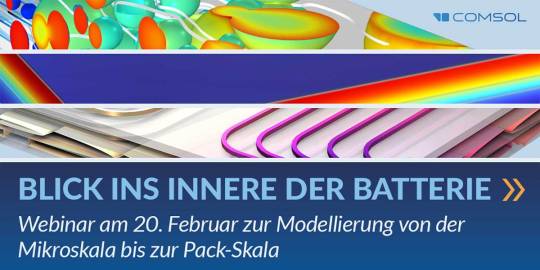
View On WordPress
0 notes
Video
youtube
Python Scripting for COMSOL Multiphysics - COMSOL Programming
0 notes
Text
COMSOL releases version 6.2 of COMSOL Multiphysics
COMSOL announced the release of COMSOL Multiphysics version 6.2, adding data-driven surrogate model functionality for efficient standalone simulation apps and multiphysics-based digital twins. It also features high-performance multiphysics solvers for the analysis of electric motors, up to 40% faster turbulent CFD simulations, and an order of magnitude faster impulse response calculations for…
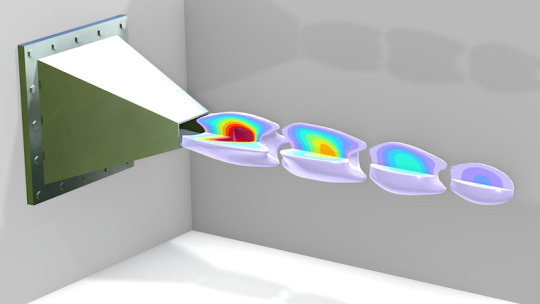
View On WordPress
0 notes
Text
disoriented by someone else reblogging this out of nowhere over six months later but i hope they find comfort and enjoyment in Norwegian pop icon Sigrid's absolute fucking bop "High Five" for all their COMSOL Multiphysics needs. time for me to return to this song since i'm still fucking being tormented by COMSOL
songs to be tormented by COMSOL to
4 notes
·
View notes
Text
Come attivare il ribbon in LibreOffice
Come attivare il ribbon in LibreOffice
Uso pochissimo Office di Microsoft e quasi sempre per motivi lavorativi ma devo ammettere che, a parte certe funzioni di Excel, se c’è una cosa che mi piace di Office è la sua interfaccia a ribbon, nella quale tutti i comandi (o quasi) sono raggruppati in modo omogeneo in schede ben distinte. Il ribbon, in pratica, sostituisce i menu e rende i comandi più facilmente accessibili, dato che ciascuna…

View On WordPress
#apple#comsol multiphysics#interfaccia grafica#keynote#libreoffice#matlab#microsoft office#numbers#pages#ribbon#sibelius
0 notes
Text
آگهی آموزش نرم افزار کامسول مالتی فیزیک در سایت tadris dabidi
نرم افزار کامسول مالتی فیزیک یکی از قدرتمندترین ��رم افزارهای شبیه ساز در زمینه مسائل چند فیزیکی است که در فضاهای یک، دو و سه بعدی قادر به حل معادلات دیفرانسیل جزئی(PDE) و کامل(ODE) برای تحلیل و بررسی رفتار سیستم های خطی و غیر خطی به روش المان محدود(FEM) است. نرم افزار COMSOL Multiphysics در حل انواع معادلات دیفرانسیل جفت شده، طراحی و شبیه سازی سامانه های فیزیکی، نانو فیزیکی، مهندسی برق، مهندسی مکانیک، علوم زمین، مهندسی شیمی، نجوم و بررسی سامانه های کوانتومی کاربرد دارد. نرم افزار کامسول مولتی فیزیکس یک مجموعه کامل شبیه سازی است که دارای بخش های چون الکتریکی(Electrical)، مکانیکی(Mechanical)، سیالات(Fluid) و شیمیایی(Chemical) است که هر کدام از این بخش ها شامل ماژول هایی جهت شبیه سازی می باشند.
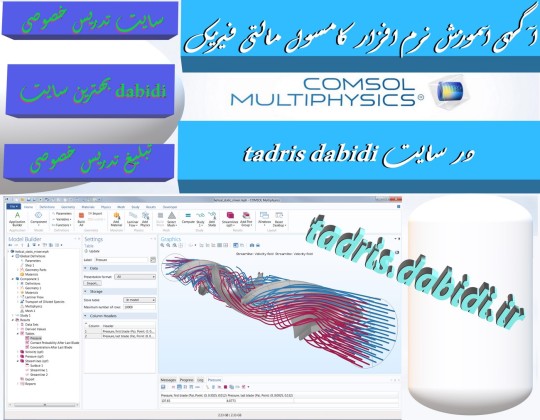
tadris.dabidi.ir
#درج آگهی تدریس#تبلیغات برتر تدریس#درج آگهی رایگان#آگهی رایگان#نرم افزار کامسول#کامسول مالتی فیزیک#جذب شاگرد#تدریس در منزل#ثبت آگهی تدریس#تدریس خصوصی#comsol multiphysics#نرم افزار کامسول مالتی فیزیک#تدریس خصوصی دروس دانشگاهی#ostad online#tutor price#بهترین معلم خصوصی#استاد و دبیر خانم و آقا#استاد خصوصی#استاد و معلم با تجربه#ارتباط مستقیم با استاد#استاد#محاسبه درصد#هزینه کلاس خصوصی#حق الزحمه تدریس خصوصی#شهریه کلاس
0 notes
Text
Top CFD Simulation Software: Tools to Boost Accuracy and Efficiency in Fluid Dynamics
Computational Fluid Dynamics (CFD) has become an essential tool for engineers and researchers who need to simulate and analyze fluid flow, heat transfer, and other related physical processes. Accurate CFD simulations can save time, reduce costs, and improve product design across industries such as aerospace, automotive, energy, and manufacturing. In this blog, we’ll explore some of the top CFD simulation software options available today that can significantly enhance the accuracy and efficiency of your simulations.

1. ANSYS Fluent
One of the most widely used CFD software solutions, ANSYS Fluent is known for its versatility and comprehensive range of simulation capabilities. It allows users to simulate complex fluid flow, turbulence, heat transfer, and chemical reactions. Fluent is popular because of its ability to handle both steady and transient flow scenarios, as well as its advanced meshing tools that improve the accuracy of simulations. Additionally, the software is highly customizable, with a user-friendly interface and detailed post-processing features that help you gain deeper insights from your results.
Key Features:
Wide range of physical models for complex flows
Advanced turbulence models
High-performance computing (HPC) support
Easy integration with other ANSYS tools
2. Siemens STAR-CCM+
STAR-CCM+, part of Siemens’ Simcenter suite, is another leading CFD simulation software known for its flexibility and integration with other simulation tools. It provides a multidisciplinary approach, allowing users to perform CFD simulations alongside structural and thermal analysis. One of STAR-CCM+'s biggest strengths is its ability to solve complex real-world engineering problems with high accuracy. The software also supports automated workflows, making it an excellent choice for users who require quick turnaround times for multiple simulations.
Key Features:
Multidisciplinary simulation environment
Automated meshing and simulation setup
Ability to handle large, complex models
Efficient solvers for faster simulations
3. OpenFOAM
OpenFOAM is an open-source CFD software that has gained significant popularity due to its flexibility, customizability, and cost-effectiveness. Unlike proprietary software, OpenFOAM allows users to tailor the code to their specific simulation needs. It is particularly favored by academic researchers and institutions for its ability to handle custom and unconventional simulations. While it may not be as user-friendly as other commercial software, OpenFOAM's vast array of solvers and utilities makes it a powerful tool for those who require more control over their simulations.
Key Features:
Open-source and free to use
Highly customizable with user-written code
A wide range of solvers for various CFD applications
Strong community support and active development
4. COMSOL Multiphysics
While COMSOL Multiphysics is primarily known for its multiphysics capabilities, it also offers robust CFD simulation tools. It is especially useful when you need to simulate fluid dynamics alongside other physical phenomena, such as structural mechanics or electromagnetics. COMSOL’s intuitive user interface makes it easier for users to set up complex simulations, and its built-in post-processing tools provide detailed visualization options for analyzing results.
Key Features:
Seamless coupling of CFD with other physics simulations
Easy-to-use interface for faster setup
Excellent post-processing and visualization tools
Supports various fluid dynamics applications
5. Altair AcuSolve
AcuSolve by Altair is a powerful CFD solver that excels in solving fluid dynamics problems quickly and accurately. Its advantage lies in its unique solution algorithms that ensure fast convergence, making it ideal for simulations where time is a critical factor. AcuSolve also integrates well with other Altair products, offering a streamlined experience for users working on multidisciplinary projects.
Key Features:
Fast and robust solvers
Accurate simulations with minimal meshing effort
Excellent integration with other Altair tools
Ideal for transient and steady-state simulations
Conclusion
Choosing the right CFD simulation software depends on your specific needs, such as the complexity of your simulations, the required accuracy, and your budget. Whether you're looking for a user-friendly platform like ANSYS Fluent or a cost-effective solution like OpenFOAM, each software package offers distinct advantages that can help you optimize your fluid dynamics simulations. By leveraging the right tools, you can improve the accuracy and efficiency of your simulations, leading to better insights and more informed engineering decisions.
Visit us to Know More Website:https://www.cfdsupport.com/ Location:CFD support, s.r.o., Sokolovská 270/201, 19000 Praha 9, Czech Republic. Contact Us:+420 212 243 883 Email:[email protected]
1 note
·
View note